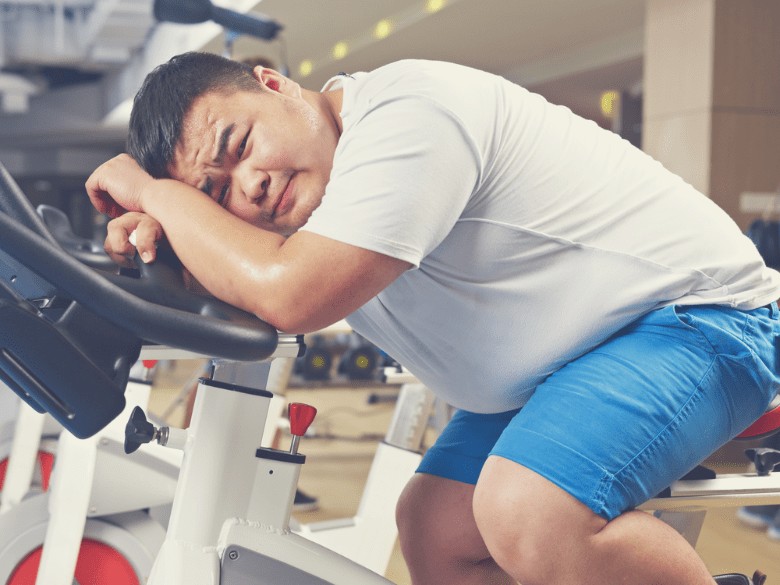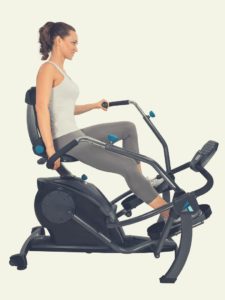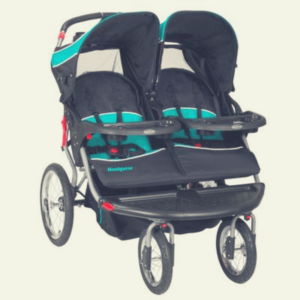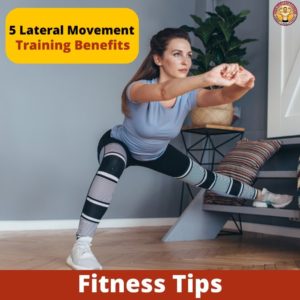Recumbent cross trainers are one of the best types of exercise machines you can have in a home gym.
You get to target every part of your body from one machine, saving you money and valuable space.
Of course, the workout is only as efficient as the machine so you should aim to buy the best you can get for your money.
I did the hard part – I searched for the best recumbent machines on the market and it was no easy task.
The cheap ones were cheap for a reason and the expensive ones had you paying for features you’ll probably never use.
Luckily I found two that are at a moderate price range and provides you with everything you need in a recumbent cross trainer.
This article will tell you everything you need to know about the Teeter FreeStep LT1 vs. HCI Fitness Physiotrainer CXT.

Recumbent Cross Trainers: What They Are and the Benefits of Using One
Before diving into the Teeter FreeStep LT1 vs. HCI Fitness Physiotrainer CXT information, it helps if you know the basics of a recumbent cross trainer.
A recumbent cross trainer is a mix between an elliptical and a recumbent bike.
These trainers provide a low-impact workout and the design is what sets it apart from other machines on the market.
When looking at recumbent cross trainers, there are three things you should focus on: the seat and handlebars of the trainer, the quality of the trainer, and the options and technology of the trainer.
Seat and Handlebars
The most important and most obvious part of a recumbent machine is the seat – it’s literally what the term recumbent refers to.
The Oxford Lexico Dictionary defines recumbent as “designed to be ridden lying almost flat on one’s back or sitting up with the legs stretched out in front”.
You won’t be lying down on a recumbent machine, but the last half of the definition is accurate.
The seat of a recumbent machine is generally set further back from the pedals of the machine and a little lower than your typical upright machine.
This allows your legs to be stretched out in front of you as you pedal rather than right up under you.
Having your legs in this position helps to take a lot of the pressure off of your joints and legs.
Recumbent seats have backs so they can support you as you sit back from the pedals. This greatly differs from upright seats which have no back support.
Upright seats require you to use your core muscles and back muscles to support yourself but recumbent seats take this pressure off of these muscles.
It’s safe to say that between the additional seat support and the alternative leg positioning, recumbent machines are much more comfortable to use than upright machines.
To add to the seat’s comfort, they’re usually cushioned very well. You may feel like you’re sitting on a firm cloud.
The best recumbent cross trainer seats are ergonomically designed and will hug your body for the best support.
Recumbent cross trainers usually have two sets of handlebars and some may even have three. One set is located near the back of the chair.
There will be a handlebar on each side. These are usually short, straight handlebars.
The second set would be the main set of handlebars which are usually quite long since you must be able to reach them from the recumbent position.
If the cross trainer has a third set, it will usually be shorter handlebars that are located right up under the console. These will be used from the standing position.

Quality
Recumbent cross trainers aren’t cheap so it makes sense to invest your money in something that’s going to last.
Most recumbent cross trainers in the price range of the Teeter FreeStep LT1 Recumbent Cross Trainer and the HCI Fitness Physiotrainer CXT are of a solid quality.
However, you’ll have the occasional manufacturer who tries to get over by charging an arm and a leg for fancy technology on a budget trainer.
It can be hard to determine the quality of a machine before you buy it since they’re in a box. The only remedy to this is if a store happens to have them on display.
If you can find a display model, check to see if the machine wobbles while you’re on it. All parts should fit together snugly and the moving parts shouldn’t rub together while you use it.
Friction is a fast way to wear parts out. Try to choose a model with as little plastic parts as possible because, obviously, metal lasts much longer than plastic.
If you can’t find a display model, there is one trick you can use to determine quality.
Something that I often stress to people who are looking to buy exercise equipment is to pay close attention to the weight of the machine.
Related: Teeter Freestep LT1 Recumbent Cross Trainer Review
High quality material weighs more than cheap material, so if the machine is extremely light weight for it’s class, you can be sure it’s not made with durable materials.
This is especially important for people who are overweight – a cheaply made machine simply isn’t going to stand up to heavier weight.
This doesn’t mean that you should never buy a lightweight recumbent machine.
Lightweight machines have their purpose – you may need something that’s easy to move, something compact, or something that will fit into a small budget (lighter weight machines tend to be cheaper).
Just keep in mind that you can’t expect premium machine quality for a budget price.
Options and Technology
Options and the technology that the machine uses are important because you’ll want to make sure that it has what you need.
The last thing you want to do is get a recumbent machine delivered to you only to find out that it’s too basic for what you’re trying to accomplish.
Even worse, if you aren’t tech savvy, it can be discouraging trying to navigate through a bunch of complicated techy features.
Most people are going to be fine with a moderate console, a few programs and resistance levels, and a media shelf.
If you like bells and whistles, prepare to pay premium pricing because they can sometimes double the price of a machine.
Spoiler alert – the Teeter FreeStep LT1 Recumbent Cross Trainer and the HCI Fitness Physiotrainer CXT don’t have bells and whistles. They have what you need for an excellent workout.
Teeter FreeStep LT1 Recumbent Cross Trainer

The Teeter FreeStep LT1 Recumbent Cross Trainer is one of the best recumbent cross trainers I’ve seen on the market (and I’ve checked out almost all of them).
It’s in the Goldilocks zone – everything about it is just right.
It’s constructed well, made of a high-grade of steel, has just enough technology to keep it modern, and has features that make it comfortable and convenient.
Plus, the product hails from a reputable company that’s family-owned and has been in business for almost 40 years.
It’s safe to say that the Teeter FreeStep LT1 Recumbent Cross Trainer has one of the most well-cushioned recumbent seats around.
It’s made with a soft but supportive high-quality foam interior that won’t flatten the moment you sit on it.
The back of the seat is slightly curved and reclines up to about 45 degrees so you can get the perfect positioning.
The bottom of the seat is ergonomically designed so you won’t get that “fatigued glutes” feeling you’d get from sitting on an uncomfortable chair for an extended time.
The seat adjusts up and down to accommodate different heights.
The machine has two sets of handlebars. One complaint I have about this machine involves the handlebars by the seat.
They are very short and angled backwards.
This can put your arms in an uncomfortable position that may fatigue your arms after a while. However, the front handlebars are amazing.
They’re adjustable and designed so you can hold either the straight part or the curved part – whichever is more comfortable.
They’re nicely padded like the seat so you can grip them without tiring out your hands.
Another feature I’m not too crazy about is the console. It’s little more than a giant stopwatch. You really can’t get a more basic console.
This is perfect for people who aren’t tech savvy. There is one button that you press to cycle through the different workout stats.
However, if you’re like me, you’d at least appreciate a backlight.
The plus side is that it does have a water bottle holder and a media holder so you can entertain yourself with your smart device.
The Teeter FreeStep LT1 Recumbent Cross Trainer weighs 110 pounds and the assembled dimensions are 54″ L x 38″ W x 52.5″ H. The suggested height range is 4’11” to 6’6″ and it can support up to 300 pounds of user weight.
Pros:
- Good, heavy weight indicates top-quality materials.
- Patented Stride Technology keeps legs straight and stabilizes hips.
- Uses magnetic resistance with an easy-adjust dial.
- The seat is adjustable in four directions.
Cons:
- Placement of the water bottle holder is awkward – it could easily be knocked over.
- The console is as basic as you can get.
HCI Fitness Physiotrainer CXT
HCI Fitness is known for producing commercial-quality rehabilitation exercise equipment. When you buy HCI Fitness, you don’t have to worry about getting a piece of junk.
Keep in mind that this high level of confidence and quality doesn’t come cheap – the HCI Fitness Physiotrainer CXT is almost twice the price of the Teeter FreeStep LT1 Recumbent Cross Trainer!
The Physiotrainer CXT is HCI Fitness’ lightweight recumbent cross trainer.
It’s perfect for a home gym compared to their other cross trainers (which are extremely bulky, heavy, and more suited for commercial use).
It comes fully assembled so you can start using it right out of the box.
The seat doesn’t have as much padding as the Teeter FreeStep LT1 Recumbent Cross Trainer, but it does have a unique feature. The back of the seat is made with a mesh-like design that allows for breathability.
This is great in case you’re a person who sweats a lot – this will allow air to circulate on your back and keep you cooler.
The seat also has attached resistance bands that allow you to get an upper body workout while you’re pedaling.
The Physiotrainer CXT has two sets of handlebars in a similar set up as the Teeter FreeStep LT1 Recumbent Cross Trainer.
However the short handlebars near the seat are angled directly forward (rather than the awkward angle of the ones on the FreeStep).
This makes it more comfortable to grip them. The console is almost just as basic as the FreeStep – it has two extra buttons but the only real difference is that it can automatically scan through the stats rather than you having to push the button.
The Physiotrainer weighs 75 pounds and the assembled dimensions are 5’L x 2′ W. It can support up to 300 pounds of user weight and is suggested for a user height range of 4’8″ to 6’4″.
Pros
- Arrives fully assembled.
- Includes resistance bands for arm workouts.
- Has a built-in heart rate receiver.
Cons
- It’s very expensive.
- Doesn’t have the best seat cushioning.
Quick Comparison Table
| Teeter FreeStep LT1 | Physiotrainer CXT | |
| Max User Weight | 300 lbs. | 300 lbs. |
| User Height Range | 4’11” to 6’6″ | 4’8″ to 6’4″ |
| Programs | 0 | 0 |
| Resistance Levels | 13 | 8 |
| Warranty | 1 year | 1 year |
| Weight: | 110 lbs. | 75 lbs. |
| Dimensions | 54″L x 38″W x 52.5″H | 60″L x 24″W |
| Average Price | $700-$800 | $1300-$1400 |
Final Thoughts on the Teeter FreeStep LT1 vs. HCI Fitness Physiotrainer CXT
The final verdict on the Teeter FreeStep LT1 vs. HCI Fitness Physiotrainer CXT is that the Teeter FreeStep LT1 is the winner.
Here is why.
When considering the Teeter FreeStep LT1 vs. HCI Fitness Physiotrainer CXT, it can be easy to make a decision based on price alone because the price difference between the two is so big.
I’ll admit that the HCI Fitness trainer is very expensive, especially considering the fact that both of these trainers are almost evenly matched in quality, options, technology, and size/weight.
It’s almost like the Physiotrainer CXT is priced twice as much just because of the name.
If I had to pick one over the other, I would pick the Teeter FreeStep LT1 Recumbent Cross Trainer because of the price. There is no point in spending twice as much money when you don’t have to.
The HCI Fitness Physiotrainer CXT is a great trainer, but the company simply hasn’t offered a reason to pay so much more over the Teeter FreeStep LT1 Recumbent Cross Trainer.
This is my recommendation, but of course you could choose either one. No matter which of these trainers you choose, you’ll be making a great decision.






